Located only one hour and thirty minutes outside Chiang Mai, Chiang Dao is the perfect destination for a day trip or a weekend getaway. From caves and hot springs to the breathtaking temple Wat Tham Pha Plong, this little mountain town has a lot to offer. I visited Chiang Dao for the first time in 2018 while I was living in Chiang Mai, quickly becoming one of my favourite places in Thailand.
Click here to read more about my day trip to Chiang Dao.
When we travelled to Thailand in 2024, I knew I wanted to spend more time in Chiang Dao. We spent three days in Chiang Dao exploring all it has to offer. So here is an in-depth guide to Chiang Dao – covering everything from how to get there, where to stay and what to do!
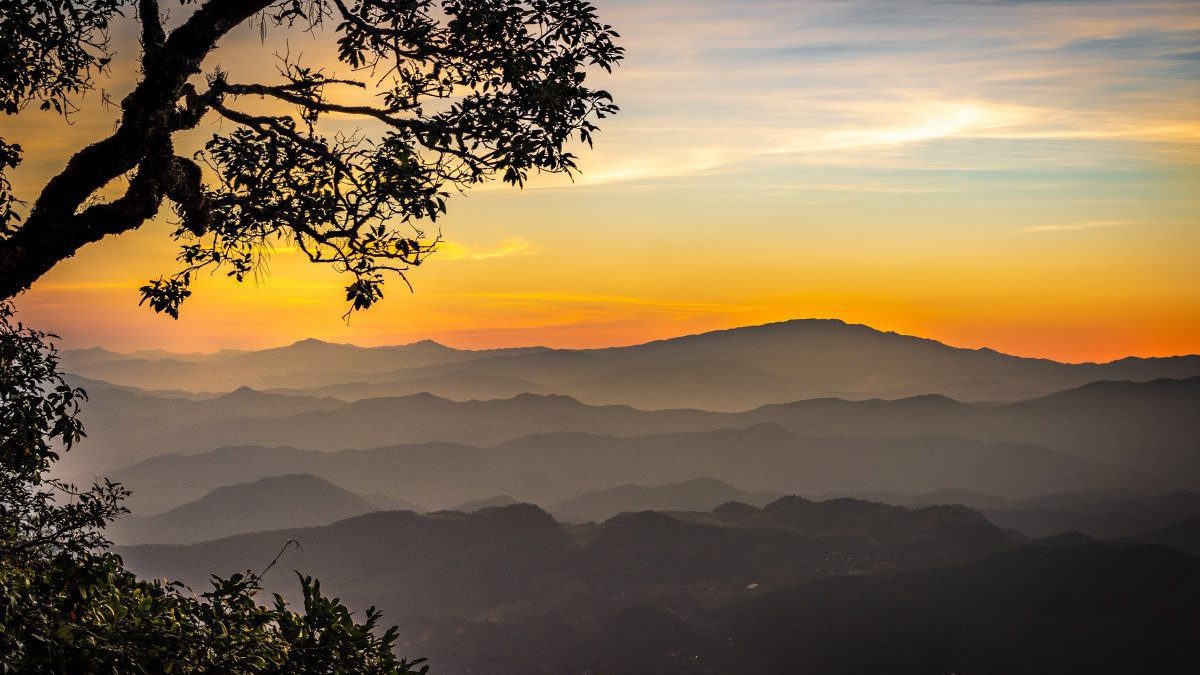
How to Get to Chiang Dao from Chiang Mai
Getting from Chiang Mai to Chiang Dao is fairly easy and straightforward. Depending on your budget and preferences you have a few travel options.
Take a Local Bus
The simplest and cheapest option is to take the public bus to Chiang Dao from Chiang Mai. Buses run from Chiang Mai Bus Terminal 1 (also known as Chang Phueak Bus Station) from early morning to late afternoon (roughly 6/7 a.m. to 5/6 p.m.). There are no schedules available online but busses usually run once or twice an hour. There is no need to buy tickets in advance. Just go to the station, buy a ticket, and hop on the next available bus. Ticket prices are very reasonable – expect to pay around 150 Baht (approximately €3.79).
Book a Taxi
If you’re looking for speed and convenience, taking a taxi is the quickest option. The journey typically takes no more than 1.5 hours and costs between €22 and €27, according to Rome2Rio. Great if you’re short on time or traveling with luggage, but it’s the priciest option.
Rent Your Own Scooter or Car
Renting your own scooter or car gives you the most flexibility, giving you the opportunity to stop along the route and fully enjoy the scenic drive from Chiang Mai to Chiang Dao. Renting a car or a scooter also makes it easier for you to explore the more remote attractions of Chiang Dao as there is no public transport available.
Cycle to Chiang Dao
For those seeking a challenge and an adventure, cycling from Chiang Mai to Chiang Dao might be the best option. This is not only a memorable experience, but also comes with a special reward! If you cycle the full distance from SugarCane Chiang Mai to Chiang Dao Nest, you’ll receive 10% off your accommodation at Chiang Dao Nest.
Here’s how to qualify for the cycling discount:
- Take a selfie in front of SugarCane Chiang Mai before you begin your ride.
- Snap a few selfies en route, ideally near recognizable landmarks or signposts to verify your journey.
- Show your photos to the staff when you arrive at Chiang Dao Nest.
- Mention your plan to cycle when booking your room.
- Only one cyclist per room is needed to receive the discount.
- This offer is valid February to November.
The direct route is about 80 km via Highway 107, but more scenic alternatives that avoid the highway are highly recommended. If you’re into cycling, this is a fantastic way to enjoy the lush countryside while saving on your stay. Read more about the discount scheme here.
Travel Tip: Don’t Forget Your Passport!
Whether you take a bus or another form of transport, keep your passport or a photo of it with you. On our return trip, the bus was stopped by police who checked IDs. While it’s a legal requirement to carry your passport at all times in Thailand, a clear photo of the passport is might also be accepted.
How to Get Around Chiang Dao
As already mentioned, there is no public transport in Chiang Dao, making it difficult to get around without a car or a scooter. Renting your own vehicle is by far the most convenient way to explore the area, especially if you want to visit remote spots like the hot springs or waterfalls. If you are not comfortable driving in Thailand, hiring a local songthaew (a shared red truck taxi) with a driver for the day is a great alternative. This is what we opted for, and it worked really well for us. We booked a driver through our accommodation and paid 1000 THB for the whole day. Alternatively, you can also go to the bus terminal and talk to the drivers there.
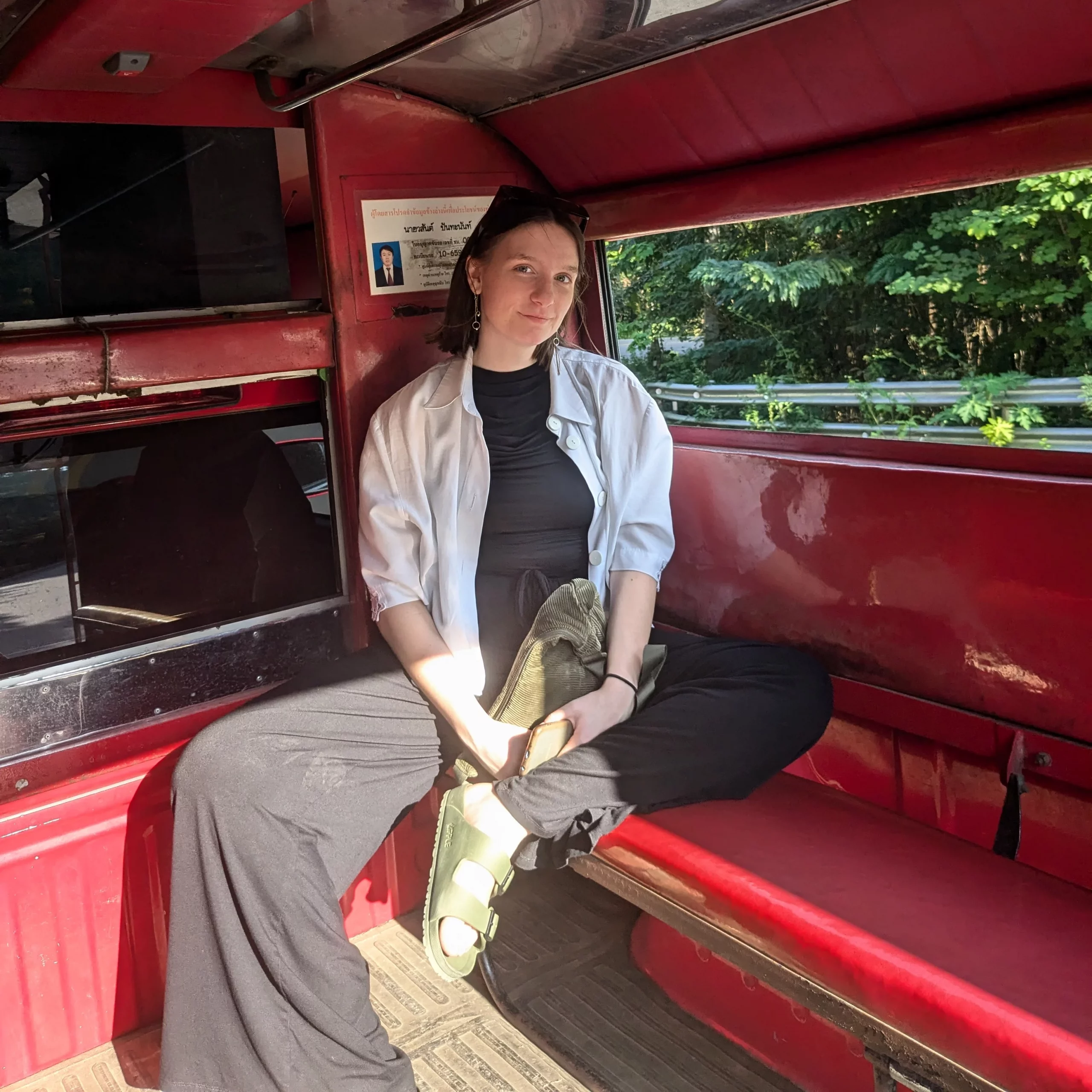
Things to do in Chiang Dao
Chiang Dao might be a small mountain town, but there is more than enough to explore in and around Chiang Dao to easily fill one or two days. Make sure not to miss Wat Tham Pha Plong and Chiang Dao Cave – they were our favourite attractions by far!
For an in-depth guide on things to do in Chiang Dao, click here!
Enjoy the View from Wat Tham Pha Plong
Wat Tham Pha Plong (วัดถ้ำผาปล่อง) is a must for anyone visiting Chiang Dao! This serene temple surrounded by jungle is perched on the mountainside and reached via a 500-step staircase. Along these steps, the route is decorated with signs reminding you of the philosophical ideas specific to Buddhism. The walk up is part of the experience, taking you through lush jungle and peaceful monk dwellings. At the top, you’re rewarded with panoramic views of the Chiang Dao valley.
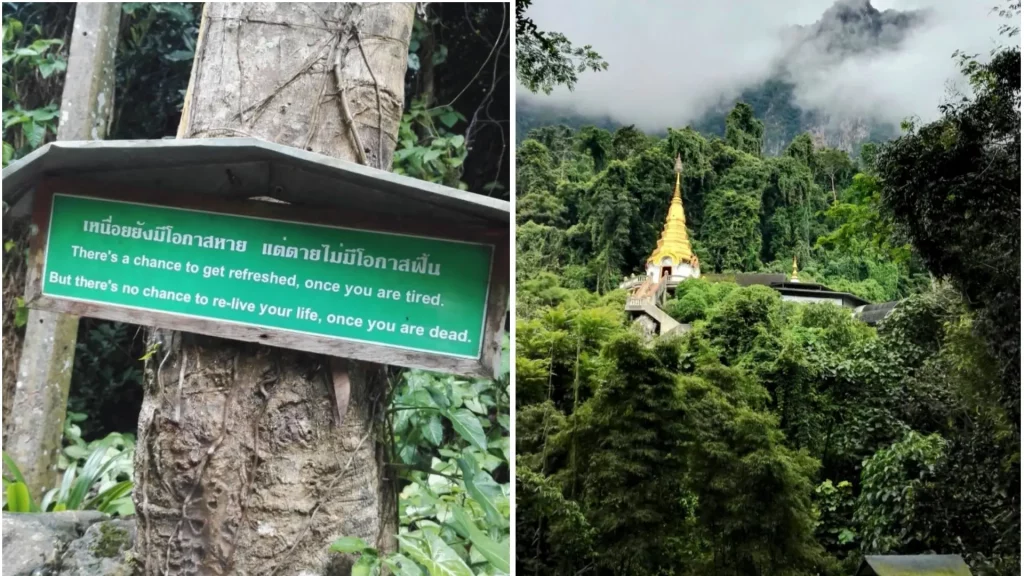
When we visited Wat Tham Pha Plong, there were only a few other tourists, making it a quiet and peaceful experience. When we visited the temple in November 2024, it was under construction, and we don’t know when the construction will be finished. It is still possible to explore the temple, but with restricted access to some areas.
Nonetheless, the quiet beauty and calm atmosphere of Wat Tham Pha Plong make it one of the most memorable places to visit in Chiang Dao – and my personal favourite temple in Thailand (along with Wat Umong in Chiang Mai maybe!)
Explore Chiang Dao Cave
Chiang Dao Cave, or Wat Tham Chiang Dao (วัดถ้ำเชียงดาว), is probably the most famous attraction – and for good reason! Located at the foot of the towering Doi Luang Chiang Dao – the country’s highest limestone peak and third-highest mountain overall – this temple-cave complex has long been a spiritual sanctuary, dating back to at least the 17th century. Inside the cave, the main chamber has a wide range of Buddha statues and images. One of its most iconic features is a rare depiction of a sleeping Buddha lying on his back. It is believed to have been constructed by Burmese soldiers during their occupation of Northern Thailand. Carvings with Burmese script can still be found on the walls.
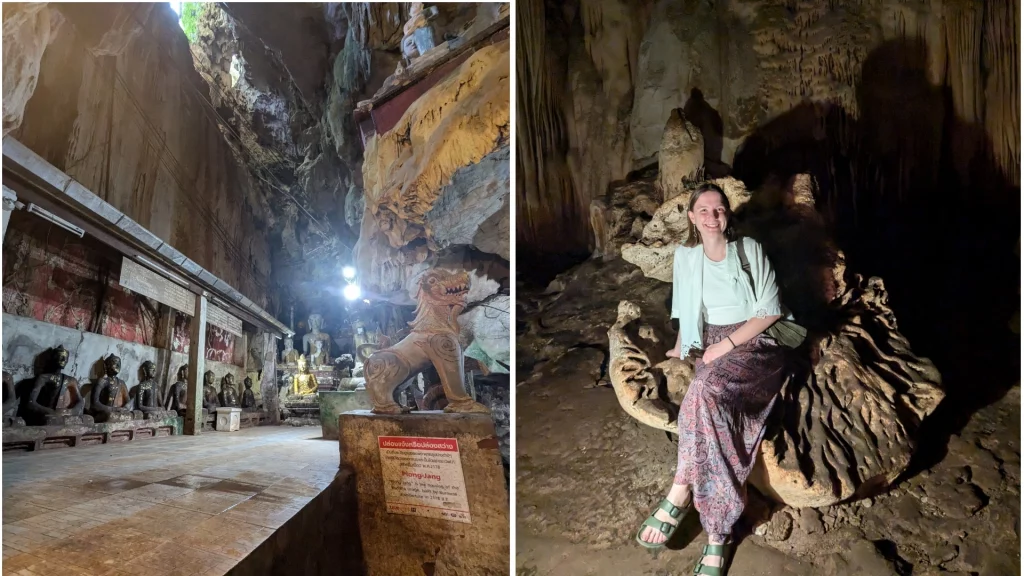
Beyond the lit areas, there are a few unlit sections that can only be explored with a local guide equipped with a gas lamp. The passages are narrow and sometimes slippery. Guided cave tours last around 20–30 minutes per section and are compulsory for safety reasons. The guides – many of whom are local women – are very familiar with the cave’s layout and history. By hiring a guide, you are also supporting the local community. Entrance to the main cave area is 40 THB for foreigners and 20 THB for Thai nationals. Exploring the deeper chambers costs 200 THB, including guide fees, lamp fuel, and maintenance. There are usually a few guides waiting at the entrance of the cave, so you don’t have to make any bookings in advance.
Hike and Camp on Doi Luang Chiang Dao
Thailand’s third-highest peak, Doi Luang Chiang Dao, stands at 2,195 metres above sea level and offers one of the most stunning hiking experiences in the country. Located in the Chiang Dao Wildlife Sanctuary, this limestone mountain is known for its narrow plains at the summit which offer panoramic views of the surrounding valleys. Visiting Doi Luang Chaing Dao is ideal for anyone seeking an adventure and wanting to hike and camp in a wildlife reserve area.
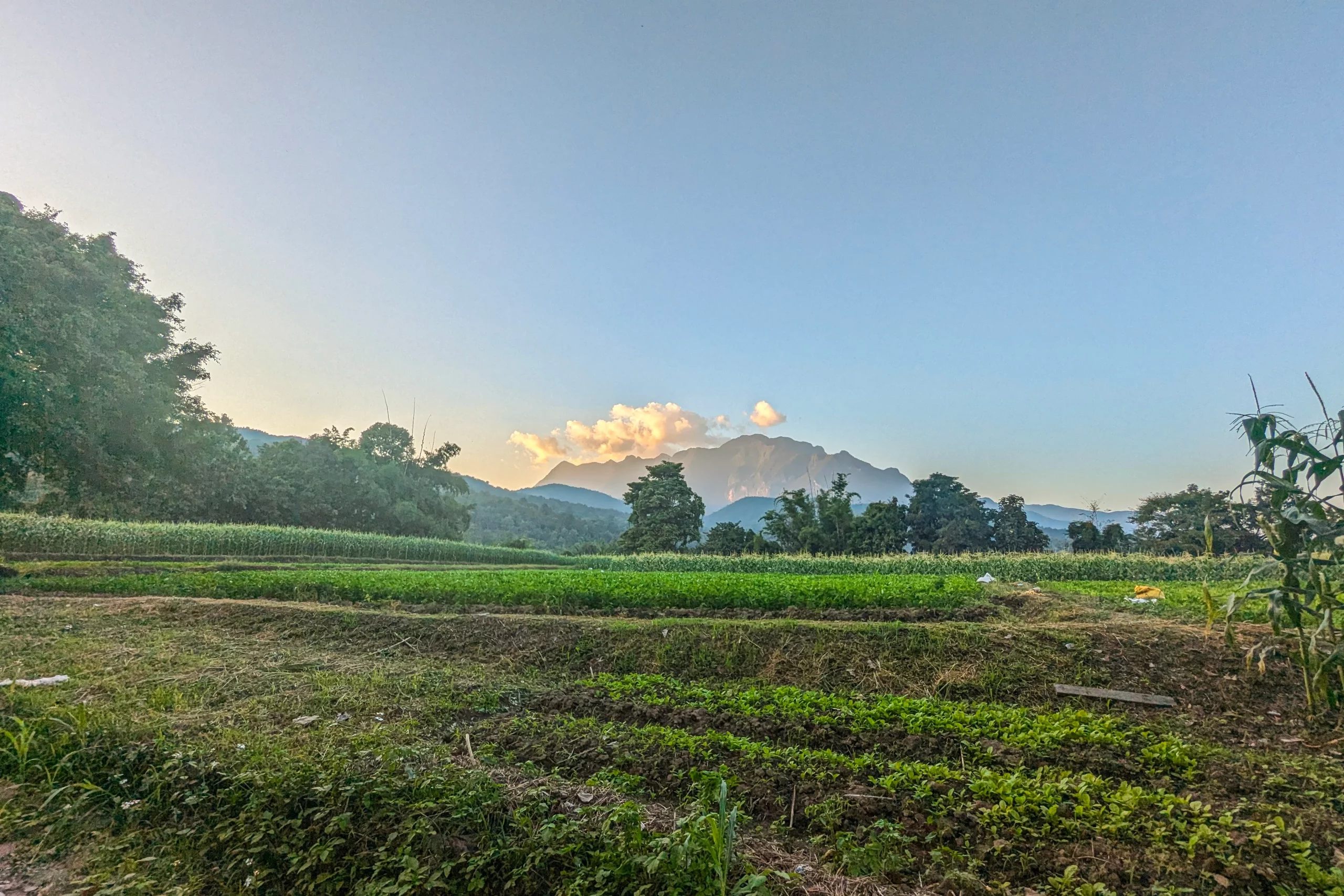
Doi Luang Chiang Dao Summit is one of the most famous trails in the area. It’s a 10.3-mile (16.5 km) out-and-back trail, with a 937-metre elevation gain, and typically takes about 6 hours to complete. It’s a challenging hike, best suited for experienced trekkers. The trail is open from June through February and is particularly popular during the cooler months. During these months, there are rare highland flora, butterflies, and birds are in full display. To hike Doi Luang Chiang Dao, you have to obtain an approval letter from the Director of the Wildlife Conservation Office at least two weeks in advance (click here for more information). There are no tourist facilities on the mountain, so you also have to bring all the essentials. Note that there’s also a 400 THB entrance fee for foreigners.
Try Local Food at Chiang Dao Market
Chiang Dao may be a small town, but it comes alive during its weekly markets. Two small municipal markets are operating daily, mainly attracting locals. You’ll find a huge range of fruits and vegetables, and homemade local dishes. It’s bustling with locals, colourful produce, and delicious street food. Even if you’re not shopping, it’s a great way to soak up the local culture!
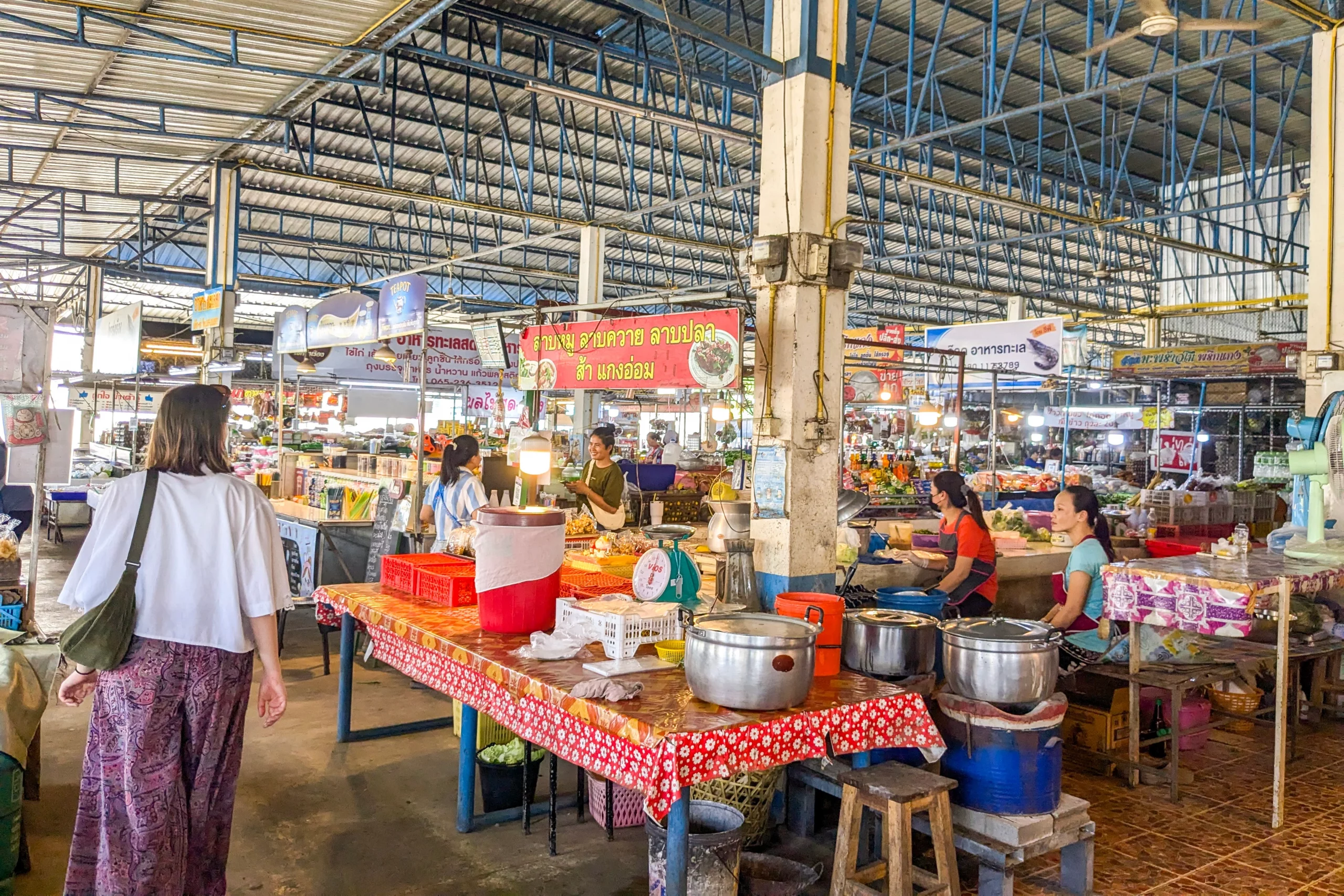
Go for a Swim in the Srisangwan Waterfall
Located within Pha Daeng National Park, the Srisangwan Waterfall is a picturesque spot about 35 kilometres from Chiang Dao town. This multi-layered waterfall is a perfect escape from the heat. The waterfall is surrounded by lush, green jungle, especially during and just after the rainy season, making it a perfect destination for a picnic or a refreshing dip. When we visited the waterfall in November 2024, there were only a few other visitors, so it was especially quiet and calm. There is a cafe by the waterfall. However, it wasn’t open when we visited.
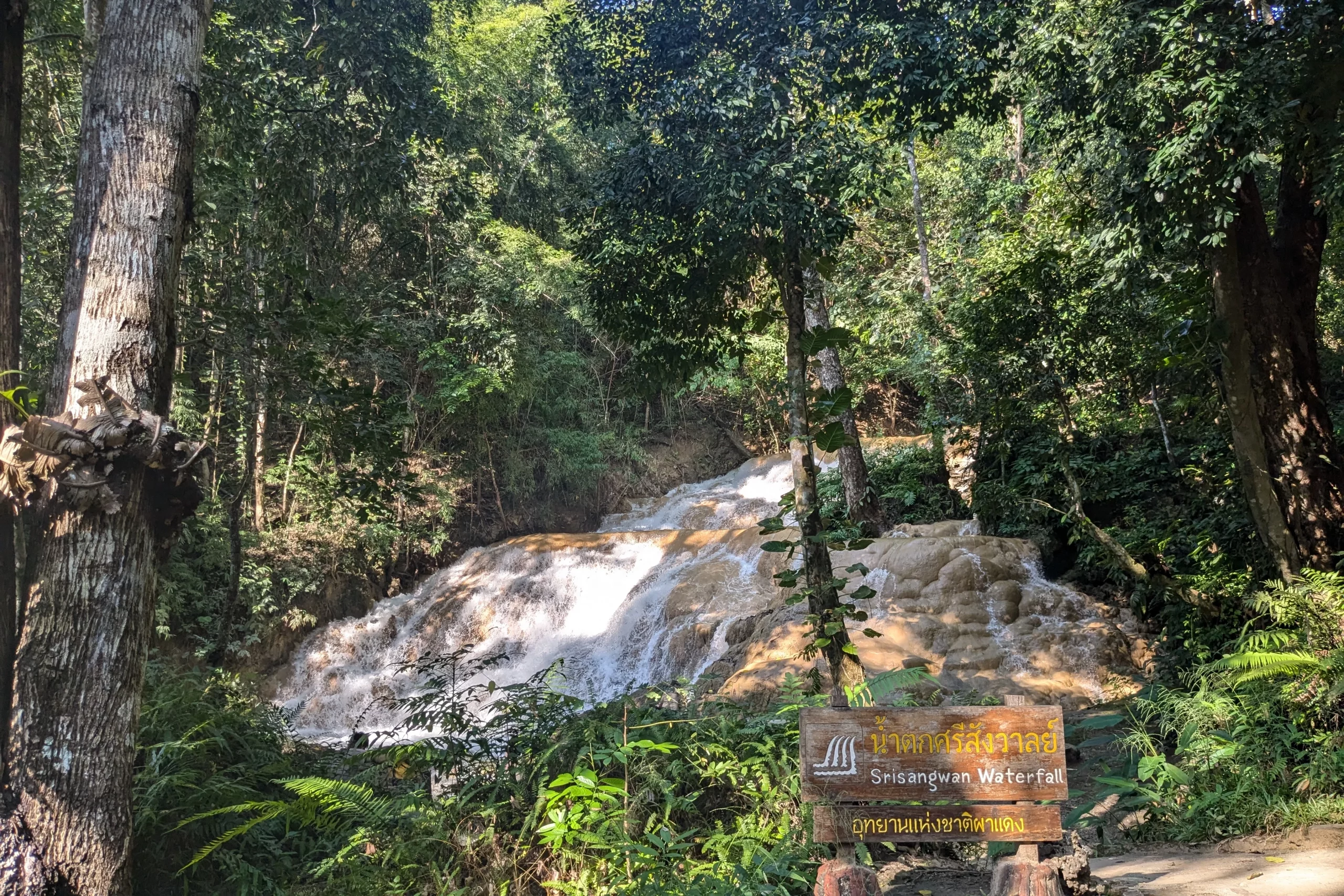
As Srisangwan Waterfall is inside a national park, foreigners will have to pay 100 THB. With this ticket, you will also be able to visit the Pong Arn Hot Springs. Whether you’re looking to cool off, relax, or just enjoy some natural beauty, Srisangwan is a lovely hidden gem in the Chiang Dao area.
Relax at the Chiang Dao Hot Springs
Do you want to relax a bit after a long day of exploring Chiang Dao and all its attractions? Luckily, Chiang Dao has two hot springs – perfect for soothing tired muscles! A favorite with locals and free of charge, Chiang Dao Hot Springs are located just west of town near Chiang Dao cave. What makes these hot springs a favourite is the natural setting on the side of a water stream just next to Chiang Dao National Park. Surrounded by jungle and locals enjoying the steamy waters, this is a laid-back way to spend an afternoon.
Chiang Dao Hot Springs are often confused with Pong Arng Hot Spring, which are around 35 kilometres outside of town, close to Srisangwan Waterfall. As the hot springs are located inside Pha Daeng National Park, foreigners will have to pay 100 THB for entrance to the park. With this ticket, you will also be able to visit Srisangwan Waterfall. When we visited these hot springs, there were only a few other people there, so we had most of the area to ourselves. Just like Chiang Dao Hot Springs, Pong Arng Hot Springs are surrounded by nature and jungle.
When to Visit Chiang Dao
Most people will probably advise visiting Chiang Dao (or the north of Thailand in general) between November and February, when the weather is cool, dry, and clear. These months offer the best conditions for hiking, exploring caves, and soaking in hot springs, with temperatures that are pleasant during the day and refreshingly cool at night. It’s also when Doi Luang Chiang Dao is at its most photogenic, often crowned with early morning mists and surrounded by blooming wildflowers.
However, I also visited Chiang Dao in August during the rainy season once and felt like the rain and mist gave this little mountain town even more charm. Of course, the weather can be unpredictable and potentially interfere with your travel plans. So, travelling between June and October requires you to be more flexible, but it is definitely worth it! Plus, there will be only a few tourists around during this time of the year.
What I would not suggest is to travel to the North of Thailand between March and May. This time is considered the burning season in Northern Thailand, when local farmers clear fields through controlled fires. During this time, the air quality can be poor due to smoke and haze, and many accommodations shut down temporarily.
Read more about the burning season by clicking here.
Where to Stay in Chiang Dao
We stayed at Huan Chiang Dao Resort during our trip in November 2024, and we couldn’t recommend it more. Despite being located right next to a big road, the resort offers a peaceful retreat just a short drive (or 20-minute walk) from Chiang Dao town. Set in a tranquil garden with mountain views, the resort offers a peaceful retreat just a short drive from Chiang Dao town. The rustic bungalows are comfortable and the garden setting offers charming mountain views – ideal for a peaceful and budget-friendly getaway!
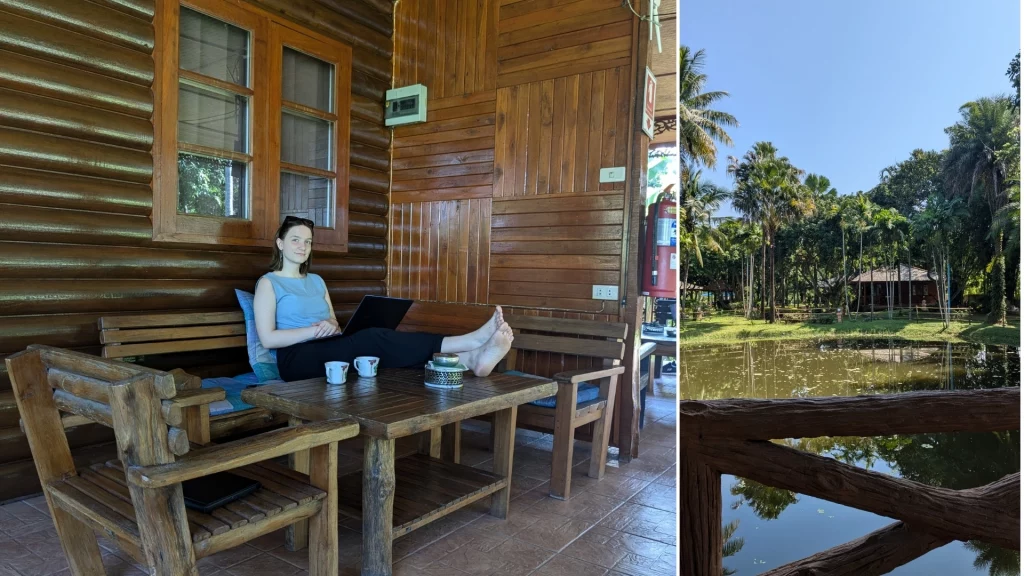
There’s an onsite restaurant serving Thai and Western dishes, a small swimming pool for cooling off in the afternoons, and free bicycles available if you want to explore nearby. The staff were incredibly kind and helpful, going out of their way to make sure we had everything we needed. Overall, Huan Chiang Dao Resort is a great mid-range option with excellent value for money.
Conclusion
Chiang Dao may be small, but it leaves a big impression. Whether you’re relaxing in hot springs, trekking through lush jungle, exploring ancient caves, or simply enjoying the mountain views with a cup of coffee, this town offers a peaceful, authentic escape from the more tourist-heavy destinations. I’m so glad we made time for Chiang Dao on this trip – and I already can’t wait to return.
If you’re heading to Northern Thailand, make sure to add Chiang Dao to your itinerary. You won’t regret it!
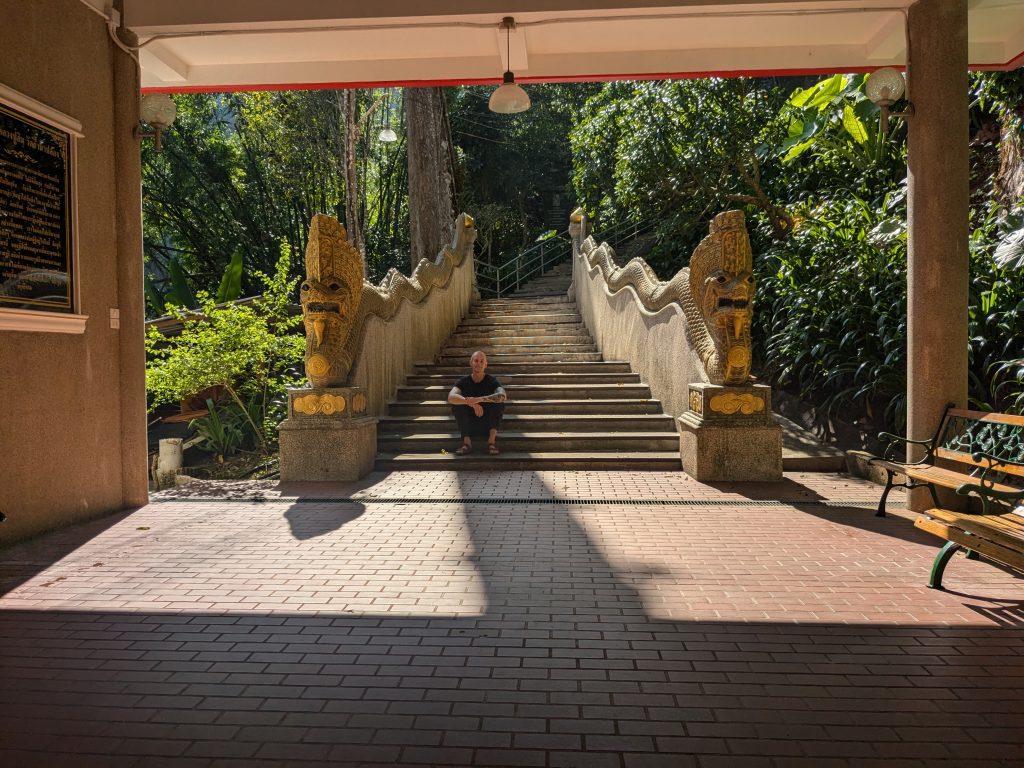
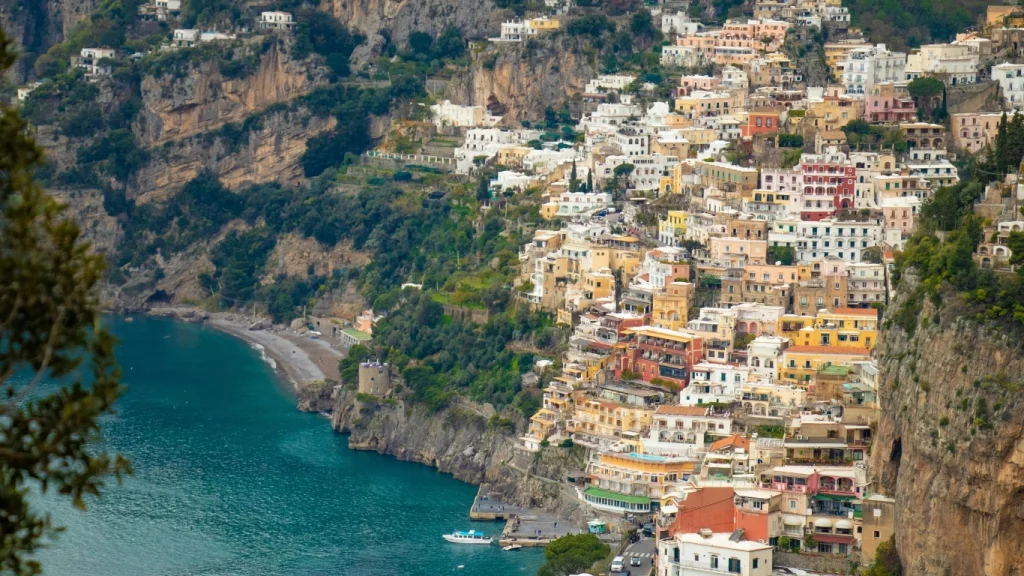
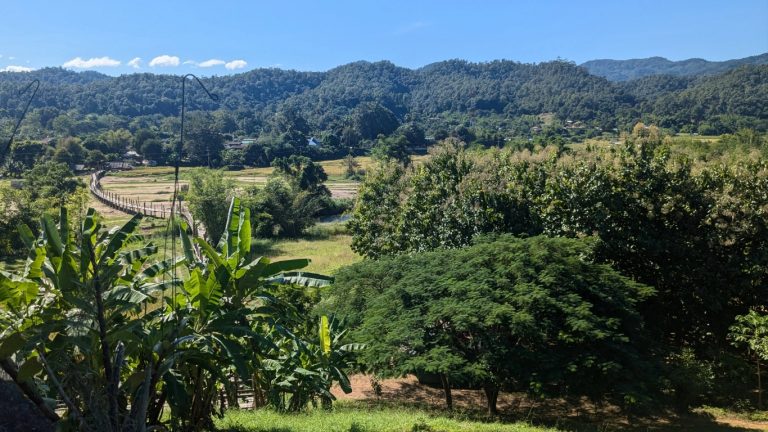
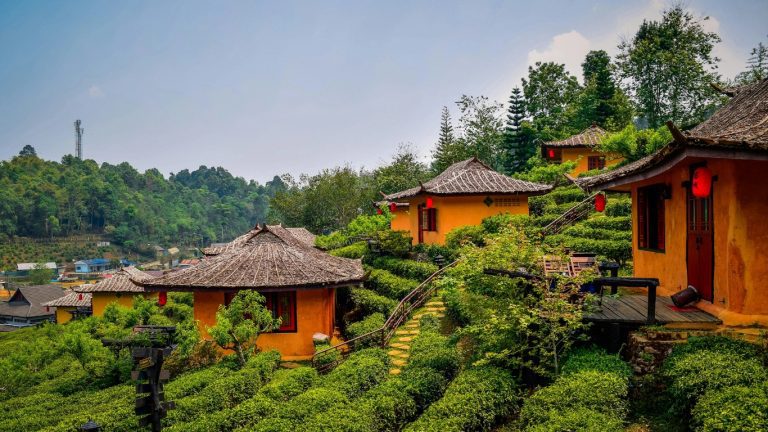
Pingback: Chiang Dao: The Perfect Day Trip From Chiang Mai -
Pingback: 5 Unique Things to do in Chiang Mai, Thailand -
Pingback: Things to Do in Chiang Dao: Wat Tham Pha Plong -
Pingback: Chiang Dao Cave: A Hidden Gem in Northern Thailand -